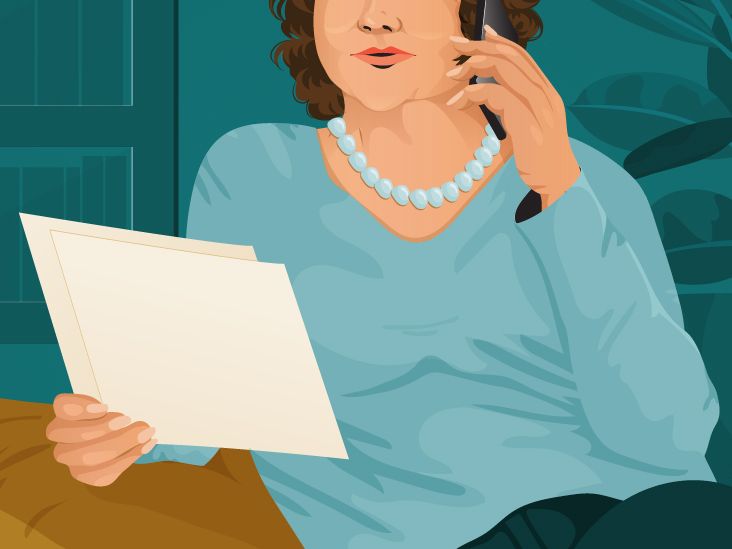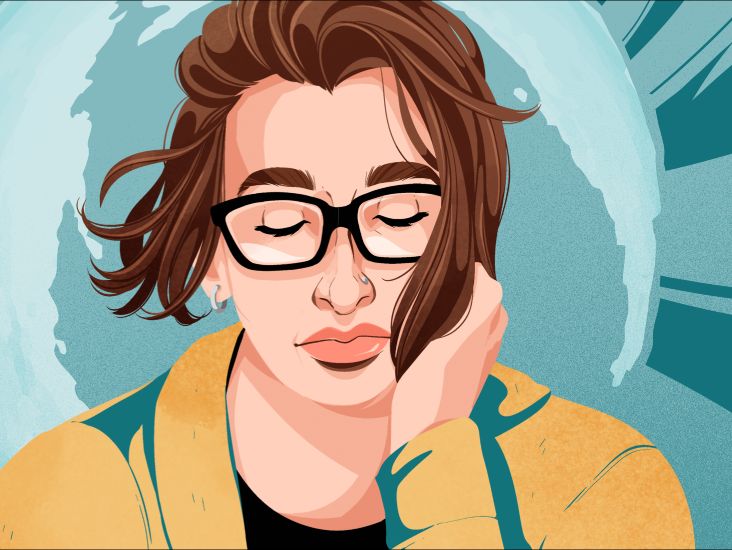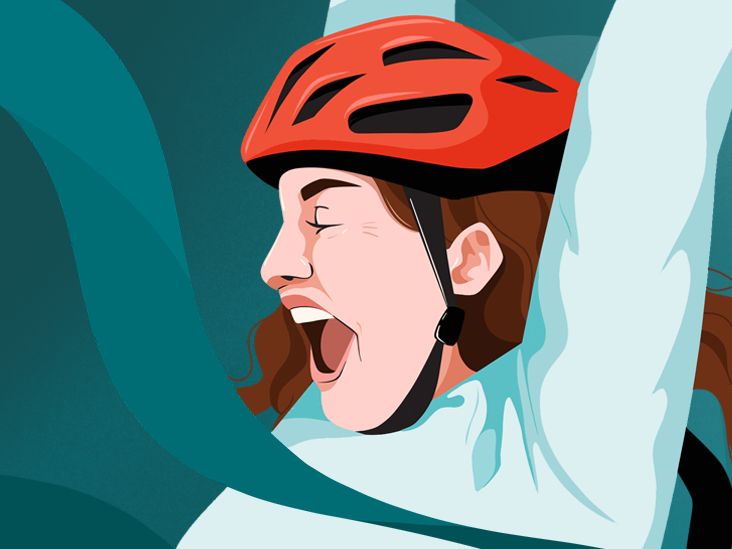
Jennifer Stone didn’t have what most people would consider a typical upbringing. Talented from a young age, Stone had multiple acting credits under her belt by the time she was old enough to drive. Most notably, her four-season stint as Harper Finkle, Selena Gomez’s quirky on-screen bestie in Disney Channel’s “Wizards of Waverly Place.”
But these days, the actress-turned-nurse is making a name for herself on social media, where she posts funny, candid videos about nursing in the time of COVID and navigating life with type 1 diabetes.
In honor of Diabetes Awareness Month, Stone opened up to Diagnosis Diaries about her challenging diagnosis experience — how that experience inspired her to pursue a career in nursing and how she’s using her platform to raise awareness about the many faces of type 1 diabetes.
As an active 20 year old, bouncing back and forth between auditions and college classes, Stone started noticing that she was tiring more easily than usual.
“I was exhausted from doing the simplest things,” she says. “Going to the grocery store would knock me out for the rest of the day.”
Other symptoms popped up too.
“I started getting blurry vision,” says Stone. “To the point where people’s faces — even right in front of me — I could see it was a face, but I couldn’t really tell anything else.”
Then, Stone inexplicably gained 60 pounds in 3 months.
“I was like, OK, something’s up. I’ve got to go to the doctor,” she says.
But answers were surprisingly hard to come by.
Stone’s doctor discovered elevated blood sugar levels, which meant she most likely had diabetes. But some of her initial symptoms, like the rapid weight gain, weren’t typical indicators of either type 1 or type 2 diabetes.
Type 2 usually develops in older adults and people with a more prolonged history of obesity. And type 1 is typically associated with a rapid progression of symptoms, like unintentional weight loss.
“I wasn’t your cookie-cutter diabetic,” she says, “although I hate that term, because nobody is really cookie-cutter. Every diabetic is different.”
Over the next 4 years, Stone went from one doctor to another in search of answers. But nobody could seem to agree on a diagnosis.
“I was put back and forth … type 2, type 1, type 2, type 1,” she says.
Although awareness of late onset type 1 diabetes has increased in recent years, most doctors still think of it as a disease that begins in childhood.
“I cried in a few doctors’ offices,” she says, “just out of sheer frustration.”
New research actually shows that more than half of all new cases of type 1 diabetes occur in adults. Sometimes called adult onset type 1 diabetes, these cases have shown that there’s much more variability within the type 1 community than previously believed. And misdiagnoses are incredibly common.
The older someone is at diagnosis, the more likely they are to be mistaken for having type 2 diabetes.
“I’d give insulin at the table and someone would go: Oh, God, I can’t. I can’t with the needles!”
Throughout her diagnosis journey, Stone was continuously put on and off different type 2 diabetes medications — and nothing was helping.
“I had doctors that did the whole blame game thing,” she explains, “where they would tell me: ‘You must be snacking, because this should be working.’”
“One of the biggest things I learned from the experience is that the hardest part of being diagnosed is in the middle. When you don’t know what’s going on with your body and you don’t know how to fix it,” she says.
“It’s the not knowing — the not feeling heard, the not feeling seen, the feeling alone in what’s going on — that can be the most challenging,” she adds.
Stone’s diabetes diagnosis experience was unique on a number of levels, so it’s no wonder she was left feeling adrift.
In children, type 1 diabetes develops when immune cells destroy beta cells in the pancreas, rendering them unable to produce the insulin needed to regulate the body’s blood sugar levels. In newly diagnosed type 1 adults, the process works the same way, it just happens more slowly.
People with “classic” type 1 diabetes need to begin injecting insulin immediately after diagnosis. Without it, blood sugar levels will continue to rise until they develop a life threatening condition called diabetic ketoacidosis (DKA).
At first, many adults diagnosed with type 1 don’t need to take insulin, because they still have a few beta cells left to produce it.
For a time, some are able to get their blood sugar levels down into a healthy range with the help of type 2 diabetes medications. But as the immune system continues to attack beta cells, those medications begin to lose effectiveness.
The pancreas hangs on as long as it can, producing small amounts of insulin. Until one day, it just isn’t enough.
Stone was taking medications for type 2 diabetes to help manage her condition but she knew something still wasn’t right.
Thankfully, she finally found an endocrinologist who was able to figure out what was going on. Stone, an active woman in her early 20s with no history of obesity, did not have type 2 diabetes. But she didn’t have a typical case of type 1 diabetes either.
Adult onset type 1 diabetes is typically defined as a condition affecting people over 30. Stone seemed young for the label, but her slower disease progression followed a similar pattern.
So did other features of her condition, like the ambiguity of her blood tests — tests that look for biomarkers of autoimmune disease and genetic susceptibility are often used to help doctors distinguish type 1 from type 2. But people diagnosed with type 1 as adults tend to have fewer markers of the condition.
When you’re stuck in diagnosis purgatory for so long, like Stone was, it’s easy to start believing that any answer will come as a relief. But when that phone finally rings, it can still feel like a punch in the gut.
“I remember when they called me to tell me officially,” she recollects. “They kept saying ‘I’m so sorry, I’m so sorry, I’m so sorry.’ I was like, ‘Why are you talking to me like I had a death in the family? What is that?!’”
“I don’t think I fully grasped what it meant,” she says. “I know now, obviously, the magnitude of that news.”
For Stone, part of what it meant was transitioning to life as someone who is insulin-dependent.
Starting insulin therapy was a game-changer for Stone.
“Once I realized how effective insulin was for a type 1 diabetic, which I know is groundbreaking,” she says with a laugh, rolling her eyes. “It was finding the right method of delivery for it.”
She’s experimented with insulin pens and insulin pumps. But both took some getting used to.
Stone was also surprised by some of the reactions she was getting from other people.
“I’d give insulin at the table and someone would go, ‘Oh, God, I can’t. I can’t with the needles.’ And I’m like, ‘I’m sorry that you don’t like a needle that’s this big!” Stone says, miming the size of the tiny needle.
At first, she would go to the bathroom to give herself an injection. But she quickly realized the effort was futile.
“I wasn’t about to spend the rest of my life in a bathroom!” she says. Her life was different now and people might view her differently, but she was OK with that.
Stone tried pump therapy, but kept running into problems with the system she was using at the time.
“For whatever reason, my body would just occlude the line within the first day or two,” she says. This meant the tubing connecting the pump to her body would develop a blockage, slowing or even stopping the flow of insulin — a dangerous prospect for someone with type 1 diabetes.
“Plus, I’m really clumsy,” she adds, laughing. “I would get the line caught on everything!”
When Stone’s endocrinologist introduced her to the InPen, Medtronic’s smart insulin pen, she finally felt like she’d found something that fit her lifestyle. Using settings predetermined by her doctor and input from a continuous blood glucose monitor, an app on her phone helps calculate her insulin boluses.
“It makes it so much easier to just get back to your day,” she says. “And it’s helped me keep such a tighter range.”
After her type 1 diagnosis, Stone was lucky enough to have a great support system in place. “Maybe a little too supportive,” she says with a laugh.
“I have a really great mama bear,” Stone says of the woman who was by her side through it all. She was incredibly helpful, especially in the beginning, when the learning curve felt so high.
“I know when I was first diagnosed, I had a little bit of time with the diabetes educator but it just didn’t feel like enough,” she says. “They go through it real quick and you’re like, wait, what, what was that last part? You leave and your head’s spinning … it’s information overload.”
These days, Stone’s got her routine down pat.
But moms will be moms. No matter how old you are or how long you’ve had diabetes.
“I love her to death,” Stone says with a laugh, “but she’ll sit there and she’ll try to figure out — ‘why was it high, if you’ — I’m like: Mom! The endocrinologist can’t even figure it out. You’re not going to figure it out. Just let it go!”
“I was [also] really lucky at the time because I had a group of friends who wanted to learn it all with me,” she adds.
Stone’s friends wanted to know how everything worked, what would need to change about her life, what her dietary limitations would be. They had a lot of questions. It meant a lot to Stone to know she could count on them in the event of an emergency, like severe low blood sugar.
“Some of my friends were a little bit too kid-gloves,” Stone says with a smile. “I was like: I’m not going to break, I’m OK … But a lot of it was really helpful.”
Even with a strong support system in place, it’s easy to feel alone in a new diagnosis. It took some time, but Stone found her way to the T1D community, something she enthusiastically advises others to do, newly diagnosed or not.
Stone’s done a lot of work with Beyond Type 1, the advocacy organization founded by Nick Jonas. Connecting with others with type 1 diabetes, in person and online, had a major impact on Stone.
“That was when that feeling of being alone dissipated, because the diabetes community is unbelievable,” she says. “With: Hey, this works for me, you should try it! or Oh, that doesn’t work for me …”
Stone talks about the value of learning from other type 1’s, who often have advice that goes way beyond what doctors or diabetes educators are able to provide.
“I feel like it takes somebody that troubleshoots the day-to-day and lives with the day-to-day,” she explains. “You get a lot more education and ideas about what to try.”
In a sense, life with diabetes, she says, “Is constant, everyday troubleshooting.”
Despite her early success in Hollywood, college was always on Stone’s roadmap. Initially a psych major, Stone switched gears after her diabetes diagnosis.
Stone remembers thinking, “I have this new thing in my life, this diagnosis that I’m still trying to understand. Nursing is a way that I can further understand my body, but I can also make sure that I’m a positive influence on [other] patients’ experiences.”
She didn’t want to stop acting because it brings her so much joy, but she had to recognize her growing passion for the health sciences.
“I always say acting is for me and nursing is what I get to do for other people,” she says.
These days, Stone splits her time between acting and working 12-hour shifts in a Los Angeles emergency room.
She credits her challenging diagnosis experience and her life with diabetes for giving her the tools she needs to succeed as a nurse, which to Stone means making a meaningful impact on patients’ lives.
“In those first 4 years [seeking a diagnosis], I encountered such a wide variety of healthcare providers, and I got to experience the ups and downs of navigating the healthcare system from a patient’s point of view,” she says.
“I think it gives me a level of understanding that’s hard to have unless you’ve been a patient,” she says. “Unless you’ve been through what it’s like to be seen and heard, and what it’s like to not be seen and heard.”
Stone particularly values the special connection she’s able to make with patients with diabetes.
“I love when I get my diabetes patients!” she exclaims. “When I have my CGM or my InPen, I’ll be like: ‘Oh, me too! Here’s mine! Mine’s pink. Yours is blue. That’s great!’”
Between acting, nursing, social media, and managing her diabetes, she’s got a lot going on.
“I’ll be honest, there are days where I’m like: ‘I’m nailing it! … And then days where I’m like: ‘What am I doing?! Why did I sign up for all this stuff? Who do I think I am?!’” she says.
Stone’s prolonged diagnosis experience taught her a lot about what it takes to navigate our complex healthcare system. You have to be your own advocate, she says, because when it comes to your own body, you are the expert.
This is especially true if your symptoms, like Stone’s, don’t fit neatly inside one box.
“That 4-year period definitely taught me how to stand up for myself,” she says. “How to advocate for myself, how to ask questions. Instead of just being like, ‘Oh, well, they’re the doctor, they know best.’”
She says to trust your instincts. Don’t second-guess yourself or assume you must be getting it wrong.
“It taught me how to put my foot down and say, ‘No. That doesn’t sound right. No. This is what’s going on with me, and that doesn’t fit,’” she says.
“My advice would be to know that the early days are the hardest it’s going to get. It won’t get harder than that. You’re not going to be perfect,” she says.
“I’m a recovering perfectionist,” she says. “But you can’t be a perfectionist with diabetes. Just take it one step at a time, learn one skill at a time, learn how to bolus, how to calculate, whatever skill it is that you need to learn.”
“Just master one at a time and before you know it, you’ll have it down,” she adds. “You’re not going to be perfect and that’s OK. You just do the best you can for that day and then move on to the next day.”



